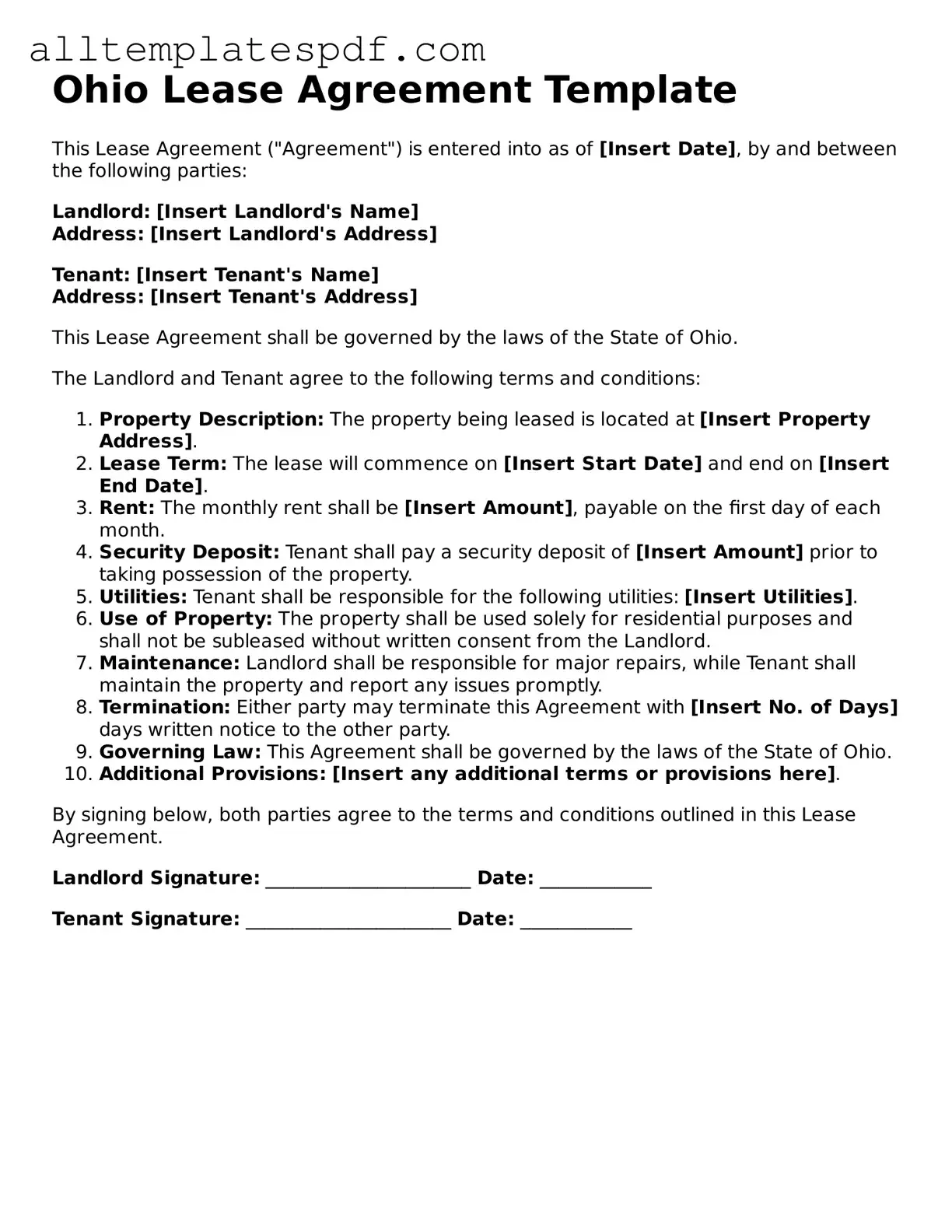When filling out the Ohio Lease Agreement form, many individuals make common mistakes that can lead to misunderstandings or legal issues down the line. One of the most frequent errors is not providing complete information. Landlords and tenants must ensure that all fields are filled out accurately. Missing details, such as the full names of the parties involved or the correct rental property address, can create confusion and may even invalidate the lease.
Another common mistake is overlooking the lease term. Many people either leave this section blank or fail to specify the exact duration of the lease. It’s essential to clearly define whether the lease is month-to-month, for a fixed term, or another arrangement. This clarity helps both parties understand their commitments and avoids potential disputes.
Additionally, some individuals neglect to include specific rental terms. This includes the amount of rent, payment due dates, and acceptable payment methods. Without these details, misunderstandings can arise regarding when and how rent should be paid. It’s crucial to be precise in this section to prevent any future disagreements.
Another mistake involves failing to address maintenance responsibilities. Many lease agreements have clauses that outline who is responsible for repairs and maintenance. If these responsibilities are not clearly defined, it can lead to frustration and disputes later on. Both landlords and tenants should take the time to discuss and document these obligations in the lease.
People also sometimes forget to review the legal requirements specific to Ohio. Each state has its own laws regarding rental agreements, and overlooking these can result in non-compliance. For instance, ensuring that the lease complies with Ohio’s security deposit laws is essential. This includes knowing how much can be collected and the timeline for returning deposits.
Lastly, many individuals fail to sign and date the lease agreement. A lease is not legally binding until both parties have signed it. Without signatures, the document is merely a draft. Remember, both parties should keep a copy of the signed lease for their records. This simple step can save a lot of trouble in the future.
